Phillip Simpson grew up in Wellington dreaming of being the next Jacques Cousteau, even completing a science degree to help him on his way. He soon discovered that his real passion lay in photography. After an extensive stint in London, the now Auckland-based photographer has built up an impressive portfolio of subjects and clients.
April 28th, 2011
What prompted you to pursue photography as a career?
The irresistible lure of music, art and culture drew me away from academia and towards photography as a vehicle for meeting interesting people and fulfilling my need to create. For better or worse I guess the right brain won out.
Does your science background influence your work?
I pay great attention to every little detail that goes into the frame, which may stem in part from my science training. Both disciplines require a high level of rigour and a need to look at things from a variety of angles.
Your portraits place as much emphasis on the landscape/surroundings as on the person. Tell me about the role that the setting plays in your portraits.
I’m always trying to achieve a sense of cinematic tension, so I put a lot of energy into finding backgrounds and locations that will help me achieve that. I also try to remove a degree of context so that the pictures have a bit of mystery. Of course the appropriateness of this approach depends on the intended use of the image. As a professional I’m aware that commercial jobs often require more context. However wherever possible, I like my commercial work and personal work to share a similar aesthetic.
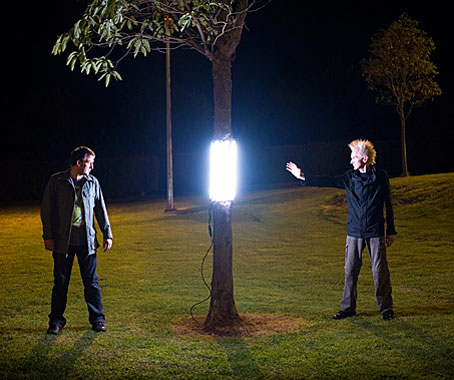
Pitch Black/Musicians. Client: Pitch Black/NZ.
The interplay in your photographs between land/sky/horizon and lines (roads, telephone wires) is fascinating. What do you look for when composing your landscape shots?
Tension, balance, repeating elements and subtle colour relationships. While I take a very structured approach to composition, the decision about when the balance is right takes place on a very instinctual level.
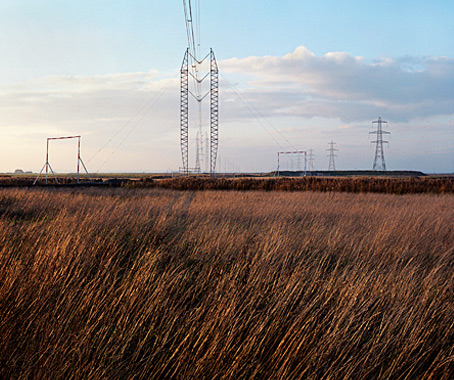
Personal work/Near Dungeness nuclear facility/UK
Who or what has influenced your approach?
I spent my youth enthusiastically poring over all sorts of inspiring imagery. Everything from the album covers of Peter Saville to the paintings of Edward Hopper and the films of David Lynch. So I guess all that stuff helped hardwire my brain for graphic composition.
I was always hugely inspired by the great American photographers like Joel Sternfield, Harry Callaghan, Arnold Newman, and Lee Friedlander and I really admire Nadav Kander for the way he has walked the fine line between art and commercial photography so brilliantly.
What makes a good landscape shot?
That’s a big question. The world is full of landscape images that are well composed, and have a great sense of light, but are too picturesque to be truly engaging for me. To have a deeper sense of meaning I feel a landscape image needs to say something about the people that inhabit or have affected the environment, whether they are present or not.
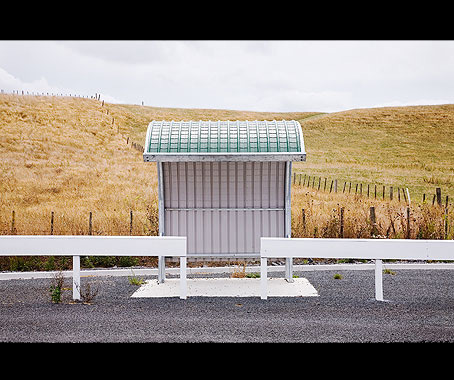
Personal work/Huntly/NZ
How did you get involved in photographing the Make Something NZ exhibition? How do you support/interact with the design community in New Zealand?
I love collaborative projects with like-minded individuals. I’d worked with Bevan Tonks on an album cover he was designing and he asked me if I’d be interested in documenting his show. It seemed like a unique project and I liked the very ephemeral nature of it, so I was keen to get involved.
I note that you spent a lot of time in London; how does the creative community in NZ differ to that in the UK?
Spending over a decade working in such an intense and complex place was fantastic training. The UK market forces creative professionals to specialise and photographers are often commissioned because their style is perfect for the job.
It’s not uncommon to drop a folio at an agency and see 30 other books lined up in reception, from which the one with just the right look will be chosen. In New Zealand art buying decisions are more often based around existing relationships.
What are the key limitations faced by NZ photographers/artists/designers?
Geography is no longer a limitation in the digital age, so professionally the main limitation is the small size of the local market and the limited budgets that often go with that.
What are the great things about being a photographer/artist/designer in NZ?
I love the relaxed environment and having more mental space in which to think and create. I also like the way ideas roll in across the ocean from overseas and somehow get reinterpreted in interesting ways in the worlds of art, music and design.
Professionally the highlight is working for international clients who see the benefit of shooting in a place full of great locations, affordable talent and a favourable exchange rate.
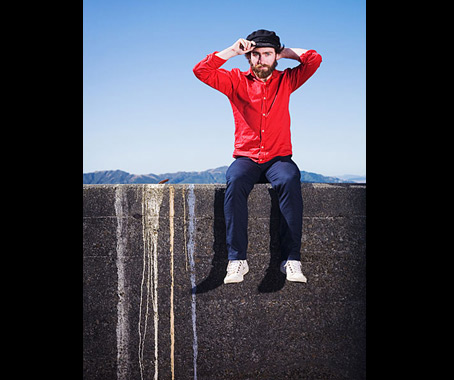
Liam Finn/Musician. Client: Spin magazine/New York
What are you working on at the moment?
I’m on my way to shoot a job in Wellington for Eye magazine, an international graphic design publication based in London.
Phillip Simpson
phillipsimpson.com
INDESIGN is on instagram
Follow @indesignlive
A searchable and comprehensive guide for specifying leading products and their suppliers
Keep up to date with the latest and greatest from our industry BFF's!

A curated exhibition in Frederiksstaden captures the spirit of Australian design

A longstanding partnership turns a historic city into a hub for emerging talent

For Aidan Mawhinney, the secret ingredient to Living Edge’s success “comes down to people, product and place.” As the brand celebrates a significant 25-year milestone, it’s that commitment to authentic, sustainable design – and the people behind it all – that continues to anchor its legacy.

Architectus has delivered Perth’s new Ruah Centre for Women and Children (RCWC), the first purpose-built facility of its kind in Australia for women and children affected by family and domestic violence.

Designer and artist Penelope Forlano is marking 100 years of women’s contributions to art, society and government with an installation in the Parliament of Western Australia.
The internet never sleeps! Here's the stuff you might have missed
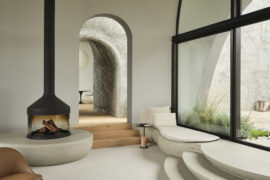
Leeton Pointon Architects and Allison Pye Interiors have been awarded as the winner of The Living Space at the INDE.Awards 2025 for their exceptional project House on a Hill. A refined and resilient multigenerational home, it exemplifies the balance of architecture, interior design and landscape in creating spaces of sanctuary and connection.

The London-based architect was recently in Australia for SyLon, an event broadcast simultaneously in Sydney and London to explore housing solutions across both cities.

MillerKnoll reimagines the convention of dinner table interactions by plating up a future-forward menu of sustainable design conversation starters as part of the inspiring “Conversations for a Better World” event series.